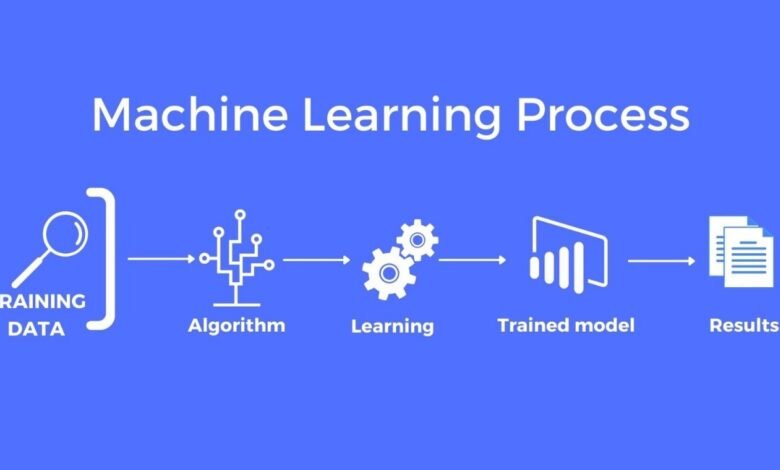
Introduction
Machine learning models are powerful tools for extracting insights and making predictions from data. However, to make these models accessible to other systems and applications, it’s essential to build APIs that provide a standardized interface for accessing their functionality. An API (Application Programming Interface) serves as a bridge between the machine learning model and external systems, allowing developers to integrate predictive capabilities into their applications seamlessly.
RESTful APIs, in particular, have become the de facto standard for building web APIs due to their simplicity, scalability, and widespread adoption. A RESTful API defines a set of resources and operations (HTTP methods) that clients can use to interact with the server. For machine learning models, these resources typically represent endpoints for making predictions or performing inference tasks.
The benefits of building APIs for machine learning models are manifold. First and foremost, it facilitates ease of integration, allowing developers to incorporate predictive functionality into their applications without needing to understand the intricacies of the underlying model implementation. Additionally, APIs enable scalability by decoupling the model inference process from the application logic, allowing multiple clients to concurrently access the model without contention.
Design Considerations for Machine Learning APIs
Designing an effective API for machine learning models requires careful consideration of several factors:
– Resource Naming and Structure: Define meaningful resource names and hierarchical structures that reflect the functionality and domain context of the machine learning model. For example, a sentiment analysis model might expose endpoints for analyzing text sentiment, with resources such as `/sentiment`.
– HTTP Methods and Actions: Choose appropriate HTTP methods (GET, POST, PUT, DELETE) for each endpoint based on the nature of the operation. For example, GET requests might be used for retrieving model predictions, while POST requests could be used for submitting data for inference.
– Response Formats: Standardize the format of API responses, typically using JSON (JavaScript Object Notation) for its simplicity and compatibility with most programming languages and platforms. Ensure that the response includes relevant metadata, such as status codes and error messages, to aid in client-side error handling and debugging.
– Authentication and Authorization: Implement mechanisms for authenticating and authorizing API access to ensure that only authorized clients can invoke the model endpoints. This might involve using API keys, OAuth tokens, or other authentication protocols depending on the security requirements of the application.
– Versioning: Plan for API versioning to accommodate changes and updates to the model interface over time while maintaining backward compatibility with existing clients. This allows developers to introduce improvements or modifications to the API without breaking existing integrations.
By carefully considering these design aspects, developers can create well-structured and user-friendly APIs for machine learning models that meet the needs of their intended audience while ensuring scalability, security, and maintainability.
Model Serialization and Deployment:
Once the design of the machine learning API is finalized, the next step is to serialize and deploy the trained model. Model serialization involves saving the trained model parameters, architecture, and any preprocessing steps into a file or format that can be easily loaded and used during inference. Common serialization formats include Pickle (for Python-based models), ONNX (Open Neural Network Exchange), or custom formats depending on the framework used for model training.
After serialization, the model needs to be deployed to a production environment where it can serve predictions to clients via the API. Deployment options vary depending on factors such as scalability requirements, resource constraints, and operational preferences. Traditional server-based deployment involves hosting the model on dedicated servers or virtual machines, providing full control over the runtime environment but requiring manual scaling and maintenance.
Alternatively, containerization technologies such as Docker offer a portable and lightweight deployment option for machine learning models. By encapsulating the model and its dependencies into a Docker container, developers can ensure consistency across different environments and simplify deployment across cloud platforms or on-premises infrastructure. Container orchestration platforms like Kubernetes further streamline the management of containerized model deployments, offering features such as auto-scaling and service discovery.
Another increasingly popular deployment approach is serverless computing, which abstracts away infrastructure management and enables developers to focus on writing code. Serverless platforms like AWS Lambda, Google Cloud Functions, and Azure Functions allow developers to deploy machine learning models as serverless functions that are triggered by HTTP requests or other events. This approach offers automatic scaling, pay-per-use pricing, and seamless integration with cloud services, making it an attractive option for building scalable and cost-effective machine learning APIs.
Building RESTful Endpoints
Building RESTful endpoints for machine learning APIs involves defining routes, handling HTTP requests, and parsing request parameters to perform model inference. This typically requires integrating the model serialization and deployment process with a web framework such as Flask (Python), Express.js (Node.js), or Spring Boot (Java).
In a Flask application, for example, developers can define routes using decorators and implement request handling logic within route functions. The route function extracts input data from the request payload, preprocesses it if necessary, and passes it to the serialized model for inference. The model’s predictions are then formatted into a JSON response and returned to the client along with appropriate status codes.
Additionally, developers should implement error handling, input validation, and response formatting to ensure a robust and user-friendly API interface. This includes handling edge cases such as invalid input data, server errors, or rate limiting to provide informative error messages and graceful degradation of service when necessary.
By following best practices for building RESTful endpoints, developers can create well-designed and reliable APIs for machine learning models that are easy to integrate, scalable, and maintainable.
Integration with Data Pipelines and External Services
Integrating machine learning APIs with data pipelines and external services is essential for automating model retraining, data preprocessing, and real-time inference. Data pipelines facilitate the flow of data from various sources to the machine learning model, ensuring that it remains up-to-date and relevant. Additionally, integrating with external services such as databases, message queues, or streaming platforms enables real-time data processing and seamless interaction with other parts of the application ecosystem.
One common integration pattern is to trigger model retraining and deployment pipelines based on changes to the underlying data. For example, a data pipeline might monitor a database for new data entries or updates and trigger a retraining job whenever significant changes occur. Once the model is retrained and deployed, the API endpoints are updated automatically to serve predictions using the latest model version.
Another integration scenario involves real-time data processing, where the machine learning API ingests data streams from external sources and provides predictions in near real-time. This could include processing user interactions on a website, analyzing sensor data from IoT devices, or monitoring social media feeds for sentiment analysis. By integrating with message queues or streaming platforms, developers can ensure that the model inference process scales dynamically to handle high volumes of incoming data.
Monitoring, Logging, and Performance Optimization
Crucial aspects of maintaining a reliable and performant machine learning API. Monitoring tools allow developers to track key performance metrics, such as response time, throughput, and error rates, to ensure that the API meets service level objectives (SLOs) and performance expectations.
Logging plays a vital role in debugging issues, auditing API usage, and tracking system behavior over time. By logging relevant information, such as request parameters, model predictions, and error messages, developers can diagnose issues quickly and gain insights into usage patterns and trends.
Performance optimization techniques help maximize the efficiency and scalability of the machine learning API, ensuring that it can handle high loads and respond to requests quickly. This may involve optimizing code execution, caching frequently accessed data or computations, and leveraging scalable infrastructure components such as content delivery networks (CDNs) or load balancers.
Additionally, integration with monitoring and logging tools such as Prometheus, Grafana, or the ELK stack (Elasticsearch, Logstash, Kibana) provides visibility into API performance and facilitates proactive troubleshooting and optimization. By continuously monitoring and optimizing the machine learning API, developers can ensure that it delivers reliable, low-latency predictions while efficiently utilizing resources.
Conclusion
Building APIs for machine learning models is a critical step in making predictive capabilities accessible to applications and users. By following design best practices, serializing and deploying models effectively, integrating with data pipelines and external services, and optimizing performance, developers. Can create robust and scalable APIs that meet the needs of modern applications. Incorporating machine learning APIs into applications opens up opportunities for automation, real-time decision-making, and data-driven insights.
By leveraging APIs, organizations can accelerate innovation, improve user experiences, and gain a competitive edge in today’s data-driven landscape. For those interested in mastering the skills required to build and deploy machine learning APIs, enrolling in a Data Science Course in Noida, Jaipur, greater Noida, kochi, Ludhiana, etc, can provide comprehensive training and hands-on experience with the latest tools and techniques. Such courses offer valuable insights and practical knowledge to equip individuals with the expertise needed to succeed in the field of data science and machine learning.




